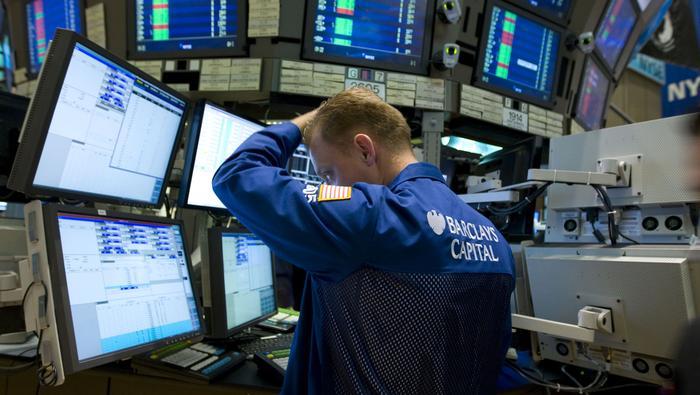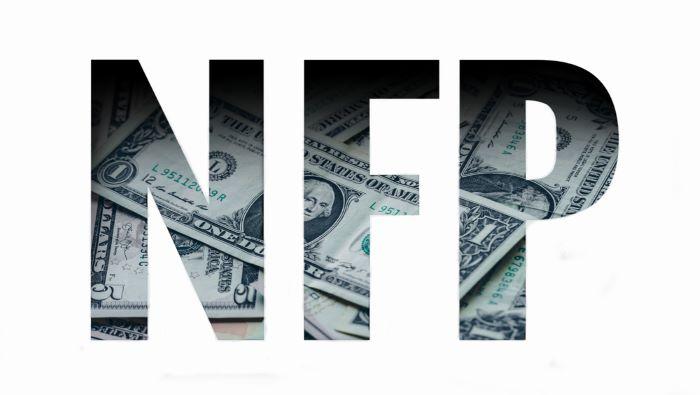2024-08-05 11:00
Nasdaq 100 rout intensifies At one point this morning the Nasdaq 100 was expected to open 1000 points lower in the cash session. The index has gapped lower, and is now trading below the 200-day SMA for the first time since March 2023. All gains since the beginning of May have been wiped out. April’s low around 17,000 is the next target. Below this comes the January low at 16,177. Any recovery needs to hold above the 200-day, and then close the gap created this weekend with a move back above 18,300. Nasdaq 100 Daily Chart Source: ProRealTime, by Christopher Beauchamp Dow under pressure For now the index is holding above 39,000, though it too has given back all the gains made in July. The price is sitting right on trendline support from the April low, and a close below this would open the way towards 38,000 and the 200-day SMA. In the short-term buyers will want a rebound back above 39,500, but with such huge losses around the globe for other indices this may only be a pause for breath before another drop. Dow Daily Chart Source: ProRealTime, by Christopher Beauchamp Nikkei 225 nosedives The falls have only intensified for this index, as the index plunges to its lowest level since November. All gains for the year have been wiped out. It is seems almost impossible to believe the index was trading at a record high less than a month ago, and around 11,000 points higher than its current level. Such a move rarely stops in one day, and we are likely to see further volatility for the moment. A close below November 2023’s low at 30,383 and below 30,000 would likely trigger even more selling. Nikkei Daily Chart Source: ProRealTime, by Christopher Beauchamp https://www.dailyfx.com/news/nasdaq-100-and-nikkei-225-suffer-huge-losses-while-dow-heads-lower-20240805.html

2024-08-05 09:00
Risk Aversion Sets in Signs of panic emerge via the VIX and well-known fear gauge Japan posts a worrying start to the week for risk assets Will the Fed be forced into front-loading the rate cutting cycle? Signs of Panic Emerge via The VIX and a Well-Known Fear Gauge Fear Gauge Confirms Major Risk Off Move A well-known measure of risk sentiment in the US is the VIX – which typically rises when the S&P 500 falls to a large degree. The VIX has shot up to levels last seen during the regional bank stress in the US but is still a far way off the peaks of the GFC and Covid crises. Source: TradingView, prepared by Richard Snow The CNN Fear and Greed Index (blue line) sharply contracted into ‘fear’ territory and borders on ‘extreme fear’ according to a number of metrics it relies upon. This has corresponded with a fall in US equities which shows little sign of slowing down amid a disappointing earnings season so far. Source: MacroMicro.me, CNN One such metric within the Fear and Greed gauge is the relationship between riskier stocks and safer bonds. The recent sell-off in US equity indices has corresponded to a large rise in bond prices (lower yields). As such the performance of stocks relative to bonds has shot sharply lower, revealing a shift in capital allocation away from risk, towards safety. Source: CNN Fear and Greed Index, CNN Japan Posts a Worrying Start to the Week for Risk Assets Volatility has arrived and its effects are being felt in Japan on Monday. The Nikkei index plunged more than 12% on Monday to register its biggest single day decline since 1987. The index has fallen victim to a rather unfortunate sequence of events. Expectations of multiple US rate cuts, at a time when the BoJ voted again to hike its policy rate this month has significantly reduced the attractiveness of the popular carry trade. A stronger yen and weaker dollar renders Japanese exporters less attractive and that has helped to extend today’s losses. When the yen was weak, the index rose as exporters enjoyed share price appreciation in expectation of healthy sales numbers. Now the yen is strengthening at a remarkable pace, reversing those prior stock market gains. Nikkei Daily Chart Source: TradingView, prepared by Richard Snow The yen is also a safe haven currency, meaning it stands to benefit from the rising tensions in the Middle East after Israel carried out targeted attacks on Lebanese and Iranian soil. Typically, index values fall when the local currency appreciates as exporters lose attractiveness and repatriated earnings translate into fewer units of the now stronger local currency. USD/JPY Weekly Chart Source: TradingView, prepared by Richard Snow Will the Fed be Forced into Front-Loading the Rate Cutting Cycle? Markets are of the opinion that the Fed has made an error, keeping interest rates too high for too long in an attempt to keep inflation in check. On Wednesday last week the Fed had an opportunity to cut rates but instead kept rates unchanged and opted for a possible cut during next month’s meeting. Now, instead of a typical 25 basis point cut markets are nearly fully pricing in a half a percentage drop to kickstart the cutting cycle. Implied Probabilities for the September Fed Meeting Source: CME FedWatch Tool, September Fed meeting probabilities Hot on the heels of the FOMC meeting, Friday’s NFP data revealed the first real stress in the jobs market as the unemployment rate rose unexpectedly to 4.3%. Easing in the labour market has been apparent for some time now but July's labour stats stepped things up a notch. Prior, moderate easing was evident through lower hiring intensions by companies, fewer job openings and a lower quitting rate as employees have shown a preference for job security over greener pastures. Sticking with the jobs report, even analysts polled by Reuters expected a maximum move up to 4.2% and so the 4.3% figure provided a clear shock factor - adding to the already tense geopolitical developments in the Middle East after Israel carried out targeted strikes in Lebanon and Iran, inciting a possible response. The dollar is well-known for being a safe haven asset but is unlikely to benefit from this appeal in the wake of rapidly rising rate cut expectations. US treasury yields are also retreating at a decent pace – reflecting market pessimism and the expectation that the Fed missed the opportunity to reduce the burden of elevated interest rates last month. The dollar story will continue to be driven by rate expectations for some time to come. US Dollar Index (DXY) Source: TradingView, prepared by Richard Snow https://www.dailyfx.com/news/risk-gauges-flash-red-vix-stocks-bonds-usd-and-the-japanese-yen-20240805.html

2024-08-02 13:26
NFP, USD, Yields and Gold Analysed A disappointing 114k jobs were added to the economy in July, less than the 175k expected and prior 179k in June. Average hourly earnings continue to ease but the unemployment rate rises to 4.3% USD continues to trend lower as do US treasuries while gold receives a boost US Labour Market Shows Signs of Stress, Unemployment Rises to 4.3% Non-farm payroll data for July disappointed to the downside as fewer hires were achieved in the month of June. The unemployment rate shot up to 4.3% after taking the reading above 4% just last month. Economists polled by Reuters had a maximum expectation of 4.2%, adding to the immediate shock factor and decline in the greenback. Previously, the US job market has been hailed for its resilience, something that is coming under threat in the second half of the year as restrictive monetary policy appears to be having a stronger effect in the broader economy. Indicators ahead of the July NFP number indicated that we may well see a lower number. The employment sub-index of the ISM manufacturing survey revealed a sharp drop from 49.3 to 43.4. The overall index, which gauges sentiment within the US manufacturing sector, slumped to 46.8 from 48.5 and an expectation of 48.8 – resulting in sub 50 readings for 20 of the past 21 months. However, the ISM services data on Monday is likely to carry more weight given the sector dominant make-up of the US economy. Additional signs of labour market weakness has been building over a long time, with job openings, job hires and the number of people voluntarily quitting their jobs declining in a gradual fashion. Declining JOLTs Data (Job hires, Job Quits, Job Openings) Source: LSEG Reuters, Datastream, prepared by Richard Snow What Does the Disappointing Jobs Data Mean for the Fed? In the same week as the FOMC meeting, the disappointing jobs data feeds directly into the message communicated by Jerome Powell and the rest of the committee that there is a greater focus on the second part of the dual mandate, the employment side. This has led to speculation that next month the Fed may even consider front loading the upcoming rate cut cycle with a 50-basis point cut to get the ball rolling. Markets currently assign an 80% chance to this outcome, but such enthusiasm may be priced lower after the dust settles as the Fed will want to avoid spooking the market. Nevertheless, there is now an expectation for four 25-basis point cuts, or one 50 bps cut and two 25 bps cuts, before the end of the year. This view contrasts the single rate cut anticipated by the Fed according to their most recent dot plot in June. Implied Market Probabilities of Future Fed Rate Cuts Source: LSEG Reuters, prepared by Richard Snow Market Reaction: USD, Yields and Gold The US dollar has come under pressure as inflation continued to show signs of easing in recent months and rate cut expectations rose. The dollar eased lower ahead of the data but really accelerated lower in the moments after the release. With multiple rate cute potentially coming into play before the end of the year, the path of least resistance for the greenback is to the downside, with potential, shorter-term support at 103.00. US Dollar Index 5-Minute Chart Source: TradingView, prepared by Richard Snow Unsurprisingly, US Treasury yields headed lower too, with the 10-year now trading comfortably below 4% and the 2-year just below the same marker. US Treasury Yield (10-Year) 5-Minute Chart Source: TradingView, prepared by Richard Snow Gold shot higher in the immediate aftermath of the data release but has recovered to levels witnessed before the announcement. Gold tends to move inversely to US yields and so the bearish continuation in treasury yields provides a launchpad for gold which may also benefit from the increased geopolitical uncertainty after Israel planned targeted attacks in Lebanon and Iran. Gold 5-Minute Chart Source: TradingView, prepared by Richard Snow https://www.dailyfx.com/news/sharp-rise-in-the-unemployment-rate-amplifies-september-rate-cut-odds-20240802.html

2024-08-02 11:00
Nasdaq 100 slumps to recent lows Wednesday’s gains were wiped out in a dramatic reversal on Thursday, which took the index right back to the lows of the week around 18,600. If 18,600 is broken the lows from the end of May at 18,187 are the next level to watch. While the overall uptrend is still intact, the price is now below the 100-day simple moving average (SMA), having closed below this for the first time since 1 May. Nasdaq 100 Daily Chart Source: IG, ProRealTime Dow back to trendline support The index has returned to trendline support from the June lows, reversing the gains made over the past week. A close below trendline support and below the May high then opens the way to 39,587. Below this lie the 50- and 100-day SMAs, not tested since early July. Dow Daily Chart Source: IG, ProRealTime DAX at three-month low Thursday’s drop has wiped out all the gains made since early June. The index now sits at its lowest level since the beginning of May. A close below 17,790 would leave the price on course to test the 200-day SMA, and then the 19 April low at 17,400. DAX Daily Chart Source: IG, ProRealTime https://www.dailyfx.com/news/nasdaq-100-dow-and-dax-all-see-sharp-losses-20240802.html

2024-08-01 12:05
BoE, GBP, FTSE 100, and Gilts Analysed BoE voted 5-4 to lower the bank rate from 5.25% to 5% Updated quarterly forecasts show sharp but unsustained rise in GDP, rising unemployment, and CPI in excess of 2% for next two years BoE cautions that it will not cut too much or too often, policy to remain restrictive Bank of England Votes to Lower Interest Rates The Bank of England (BoE) voted 5-4 in favour of a rate cut. It has been communicated that those on the Monetary Policy Committee (MPC) who voted in favour of a cut summed up the decision as “finely balanced”. In the lead up to the vote, markets had priced in a 60% chance of a 25-basis point cut, suggesting that not only would the ECB move before the Fed but there was a chance the BoE could do so too. Lingering concerns over services inflation remain and the Bank cautioned that it is strongly assessing the likelihood of second-round effects in its medium-term assessment of the inflationary outlook. Previous reductions in energy costs will make their way out of upcoming inflation calculations, which is likely to maintain CPI above 2% going forward. The updated Monetary Policy Report revealed a sharp but unsustained recovery in GDP, inflation more or less around prior estimates and a slower rise in unemployment than projected in the May forecast. Source: BoE Monetary Policy Report Q3 2024 The Bank of England made mention of the progress towards the 2% inflation target by stating, ‘Monetary policy will need to continue to remain restrictive for sufficiently long until the risks to inflation returning sustainably to the 2% target in the medium term have dissipated further’. Previously, the same line made no acknowledgement of progress on inflation. Markets anticipate another cut by the November meeting with a strong chance of a third by year end. Immediate Market Reaction (GBP, FTSE 100, Gilts) In the FX market, sterling has experienced a notable correction against its peers in July, most notably against the yen, franc and US dollar. The fact that 40% of the market anticipated a hold at today’s meeting means there may be some room for a bearish continuation but it would seem as if a lot of the current move has already been priced in. Nevertheless, sterling remains vulnerable to further downside. The FTSE 100 index showed little response to the announcement and has largely taken its cue from major US indices over the last few trading sessions. UK bond yields (Gilts) dropped initially but then recovered to trade around similar levels witnessed prior to the announcement. The majority of the move lower already took place before the rate decision. UK yields have led the charge lower, with sterling lagging behind somewhat. As such, the bearish sterling move has room to extend. Record net-long positioning via the CFTC’s Cot report also means that massive bullish positions in sterling could come off at a fairly sharp rate after the rate cut, adding to the bearish momentum. Multi-Assets (5-min chart): GBP/USD, FTSE 100, 10-year Gilt Yield Source: TradingView, prepared by Richard Snow https://www.dailyfx.com/news/bank-of-england-narrowly-votes-for-25-bps-cut-gbp-gilts-little-changed-20240801.html

2024-08-01 10:00
FTSE 100 at two-month high The price has enjoyed a strong week, with further gains yesterday taking it to a two-month high after it broke higher at the end of last week.The record high is in sight once more, and the uptrend is firmly in place. It would need a reversal back below 8200 to cancel out this view. FTSE 100 Daily Chart S&P 500 lifted by Fed decision The latest pullback from the mid-July highs appears to have run its course. After stabilising around 5400 this week the index shot higher yesterday, bolstered by the Fed rate decision and the high likelihood of a September rate cut. The record highs of July are the next target. Sellers will need a reversal back below 5450 to cancel out the bullish view. Amazon and Apple earnings tonight raise the prospect of more volatility. S&P500 Daily Chart Nikkei 225 stumbles While the index rebounded in the wake of the Bank of Japan meeting, poor earnings from Toyota helped tip the price back to the downside. However, it is worth noting that, for the moment at least, the index is holding above the 200-day simple moving average (SMA). If this continues to hold then a low may yet form. Alternately, a close below the 200-day would then open the way to a test of last week’s lows, and then down to the April lows below 37,000. Nikkei 225 Daily Chart https://www.dailyfx.com/news/ftse-100-and-s-p-500-higher-but-nikkei-225-drops-back-20240801.html
